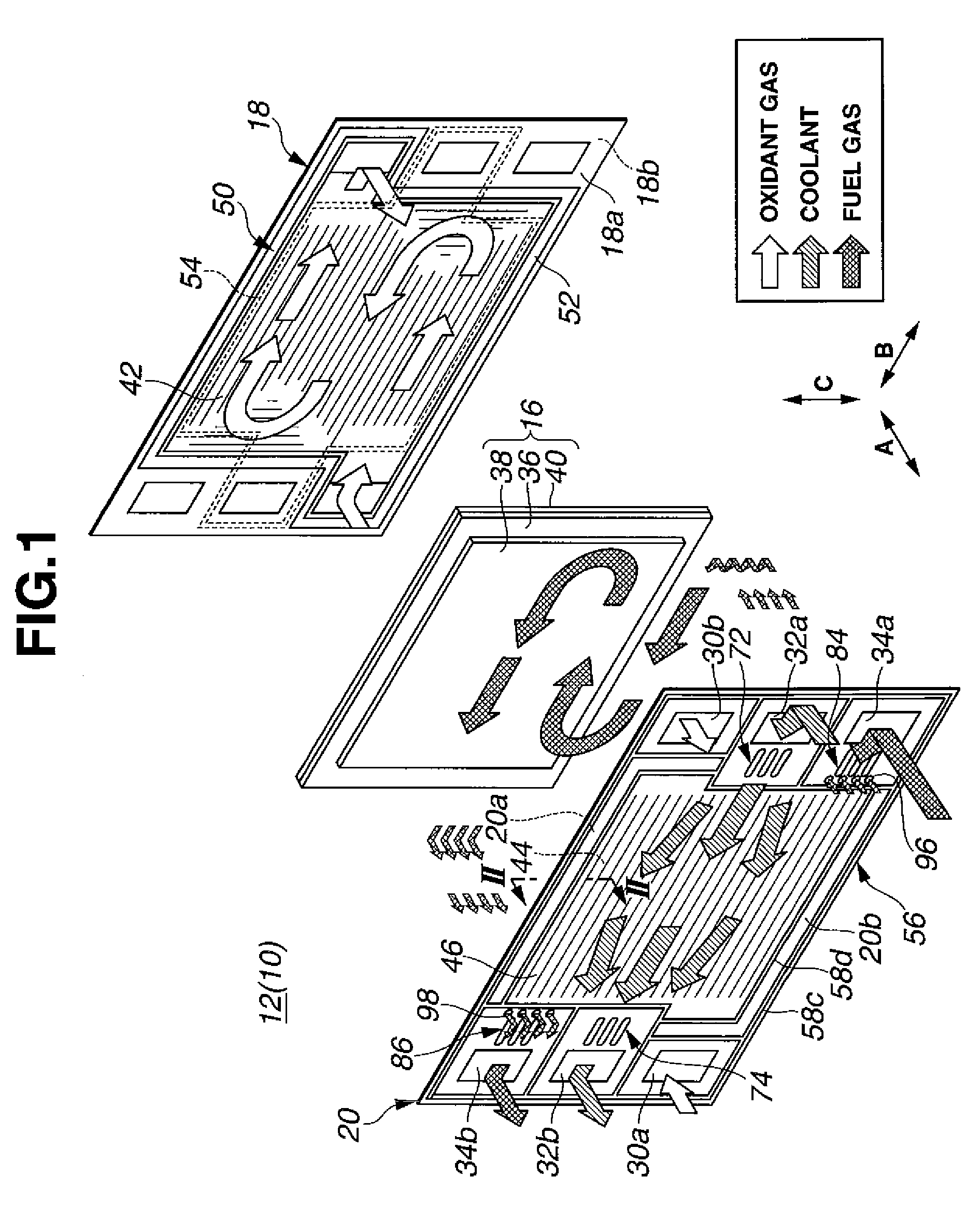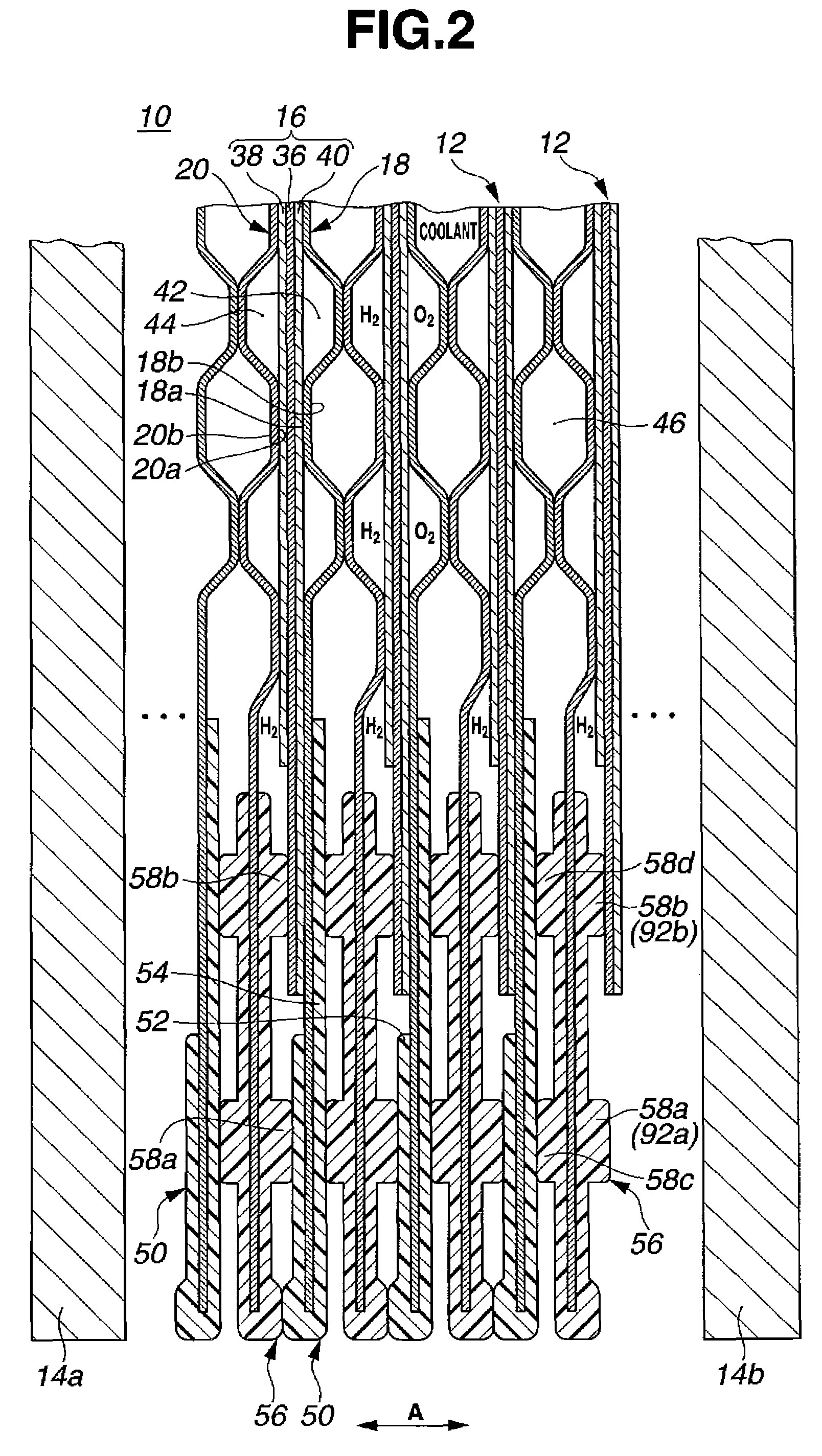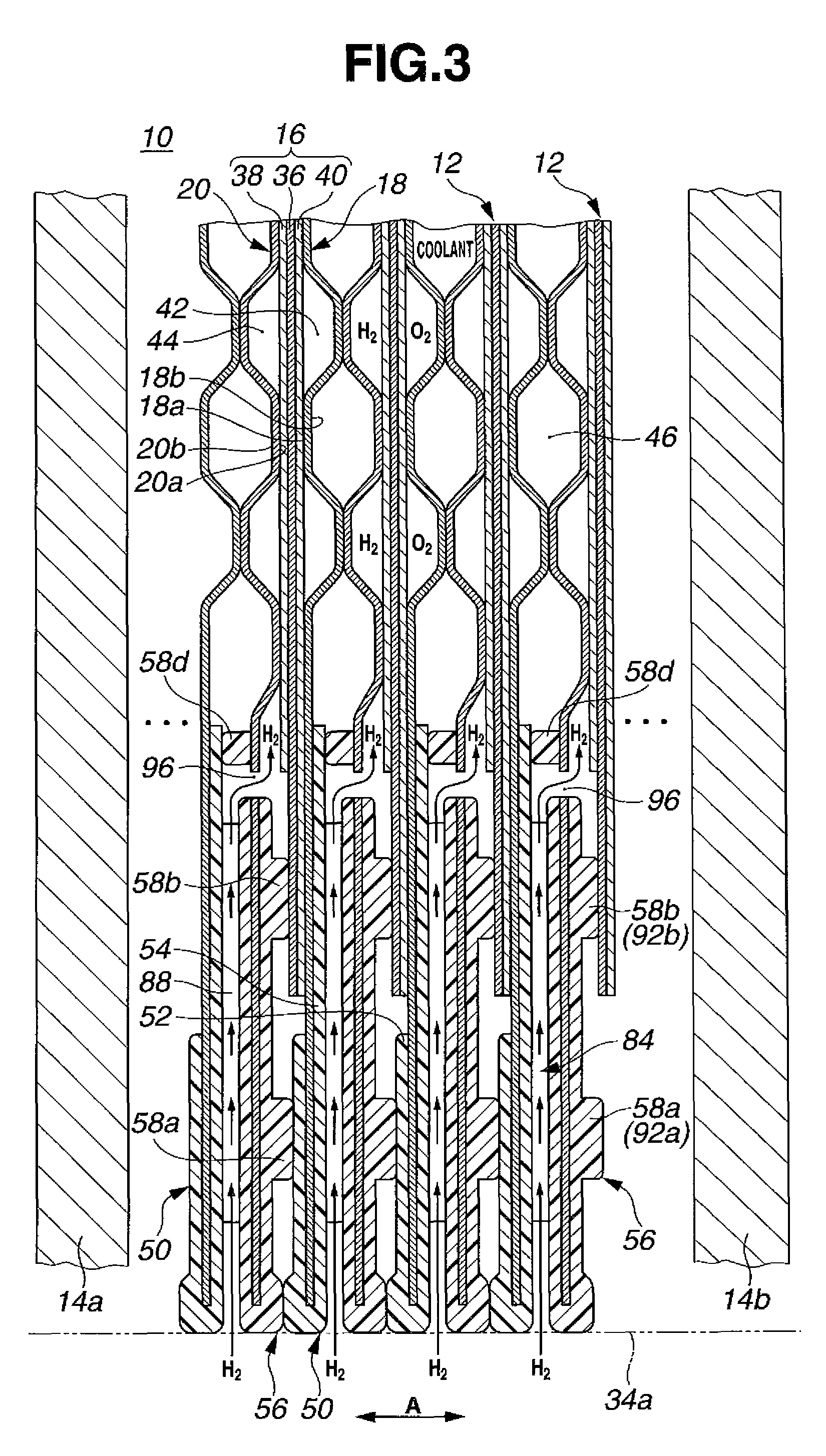Separator and separator seal for polymer electrolyte fuel cells
a technology of separator seal and polymer electrolyte, which is applied in the direction of fuel cell details, fuel cell, electrochemical generators, etc., can solve the problems that the elasticity of silicon rubber obtained by curing the addition cure type composition is still unsatisfactory over a long term, and achieves excellent sealing performance, reduced compression set, and effective moldability
- Summary
- Abstract
- Description
- Claims
- Application Information
AI Technical Summary
Benefits of technology
Problems solved by technology
Method used
Image
Examples
example 1
[0096]70 parts of dimethylpolysiloxane #1 capped with dimethylvinylsiloxy at both ends and having a Mw of 26,000 and a vinyl content of 0.000088 mol / g and 10 parts of gum-like dimethylpolysiloxane #2 capped with dimethylvinylsiloxy at both ends, containing vinyl on side chains, and having a Mw of 370,000 and a vinyl content of 0.00052 mol / g were mixed with 30 parts of fumed silica having a BET specific surface area of 200 m2 / g (Aerosil 300, Nippon Aerosil Co., Ltd.), 6 parts of hexamethyldisilazane, and 2.0 parts of water at room temperature for 30 minutes. The mixture was heated at 150° C., agitated at the temperature for 3 hours, and cooled. The mixture was further combined with 50 parts of dimethylpolysiloxane #1 and milled for 30 minutes, yielding a silicone rubber base. To 160 parts of the silicone rubber base were added 3.3 parts (giving [Si—H / vinyl]=1.5 in molar ratio) of methylhydrogenpolysiloxane #3 capped with dimethylsiloxy at both ends, containing Si—H groups at ends and...
example 2
[0098]43 parts of dimethylpolysiloxane #4 capped with dimethylvinylsiloxy at both ends and having a Mw of 18,000 and a vinyl content of 0.00011 mol / g, 20 parts of dimethylpolysiloxane #5 capped with trimethylsiloxy at both ends, containing vinyl on side chains and having a Mw of 42,000 and a vinyl content of 0.00007 mol / g and 12 parts of gum-like dimethylpolysiloxane #6 capped with dimethylvinylsiloxy at both ends, containing vinyl on side chains and having a Mw of 450,000 and a vinyl content of 0.000022 mol / g were mixed with 35 parts of fumed silica surface treated to be hydrophobic and having a BET specific surface area of 260 m2 / g (Rheorosil DM30S, Tokuyama Co., Ltd.), 5 parts of hexamethyldisilazane, and 1.0 part of water at room temperature for 30 minutes. The mixture was heated at 150° C., agitated at the temperature for 3 hours, and cooled. The mixture was further combined with 50 parts of dimethylvinylsiloxy-endcapped dimethylpolysiloxane #4 and milled for 30 minutes, yieldi...
PUM
| Property | Measurement | Unit |
|---|---|---|
| BET specific surface area | aaaaa | aaaaa |
| viscosity | aaaaa | aaaaa |
| thickness | aaaaa | aaaaa |
Abstract
Description
Claims
Application Information
 Login to View More
Login to View More - R&D
- Intellectual Property
- Life Sciences
- Materials
- Tech Scout
- Unparalleled Data Quality
- Higher Quality Content
- 60% Fewer Hallucinations
Browse by: Latest US Patents, China's latest patents, Technical Efficacy Thesaurus, Application Domain, Technology Topic, Popular Technical Reports.
© 2025 PatSnap. All rights reserved.Legal|Privacy policy|Modern Slavery Act Transparency Statement|Sitemap|About US| Contact US: help@patsnap.com



